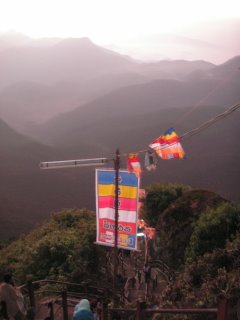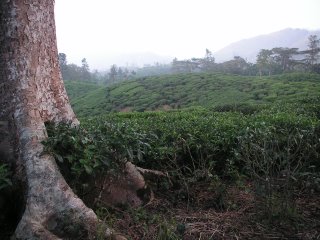




Anyway, for actual content about outcome of Hong Kong talks, a good write up:
(from Kathmandu Post, 23 December, 2005)
What is the benchmark?
by R.A.
"Hong Kong ministerial Conference of the World Trade Organization did not fail like Cancun Ministerial, as many observers had predicted. However, the benchmark against which the so called “success” should be measured may be quite subjective. If “development” is considered the touchstone for measuring success, significant advancement of the cause espoused by the Doha Development Agenda (DDA) is the only measurement of success.
It may be recalled that DDA, considered truly a development round, did not only include several issues of concerns to the developing countries in the main text, but also issued two separate declarations. They were: “Implementation Related Issues and Concerns” and “TRIPS and Public Health”. This column starts with the success made on these two issues before analyzing other issues included in the DDA.
First, a total of 12 issues, which required serious commitment from the developed countries so as to ensure their implementation, were listed out by the first of the above mentioned declarations. To the dismay of the developing countries, there has been extremely limited progress on this issue over the period of past four years. Adding insult to injury, Hong Ministerial Declaration institutionalizes the process of sidelining this issue by pushing the deadline further to “review progress and take any appropriate action” to 31 July 2006.
Second, on TRIPS and Public health, WTO members agreed, on 6 December 2005, to adopt a permanent amendment to the TRIPS Agreement, which allows the countries with insufficient pharmaceutical manufacturing capacity to import generic versions of drugs still under patent. However, this theoretical assurance, which was provided on 30 August 2003 itself by the WTO members, has not been utilized so far by any WTO member so far, due to the stringency of conditions attached. This is not a victory for the developing countries – it is rather a victory for the Northern pharma lobby, which has managed to contain the “damage” caused to them by the TRIPS and Public Health Declaration.
What has been the fate of other issues? On the relationship between TRIPS and Convention on Biological Diversity (CBD) the Ministerial Declaration has watered down the “negotiating mandate” provided by the DDA. Ministers merely “agreed to continue the work” and postponed the possibility of engaging on any negotiations at least until the seventh ministerial conference of the WTO. There is no sense of respite for the developing countries rich in biodiversity and traditional knowledge, which wanted to put a halt to the process of biopiracy through a mandatory “disclosure” requirement.
On the issue of agriculture the Doha mandate of phasing out of the export subsidies have been delayed at least until 2013 by the Hong Kong Ministerial Conference. Skeptics argue that by 2013, due to the ongoing reform under Common Agriculture Policy of the European Union, the actual reduction will be only to the tune of one billion, whereas the huge domestic support which prevents developing countries agricultural produce from entering the EU market remains. Actual gains will therefore be minimal.
Non-agricultural market access has been and will continue to be an area where developing countries are on the defensive side. The agreement reached at the Hong Kong Ministerial to follow Swiss formula for the reduction of industrial tariff would mean that developing countries will face steeper reduction in their tariffs. This could not only lead to deindustrialization, but also job losses in these countries.
Services negotiations, which became controversial even before the start of the Ministerial, saw a lot of wrangling between the developed and developing countries. One of the most controversial proposals relating to plurilateral negotiations had to be rewritten during the ministerial. Even after that the current text leaves room for different interpretations.
Special and differential (S&D) treatment used to be considered the backbone of the DDA with the members to committing to see to it that they are made precise, effective and operational. However, even after four years there is no significant progress on overwhelming majority of these issues, particularly Agreement-specific proposals, with deadlines set for the resolution being extended at least four times. As per the Hong Kong Ministerial Declaration, ministers agreed to expeditiously complete the review of all the outstanding Agreement-specific proposals and report to the General Council, with clear recommendations for a decision, by December 2006 – fourth such deadline fixed after DDA was adopted.
The only five S&D proposals that have been agreed by the Ministerial relate to those proposed by LDCs, the most important of which is the provision for duty free quota free market access. Even on this issue, developed countries tried to create a division among the developing countries and LDCs on the one hand and within the LDCs on the other. In the end, the developed countries agreed to provide such facilities to LDCs only on 97 percent of their tariff lines. This still leaves enough room for the developed countries protect their sensitive products such as textiles, clothing, rice, banana and sugar.
It is worth noting that even prior to the Hong Kong Ministerial Conference WTO agreed to provide seven-and-half-year extension to the LDCs to implement the TRIPS Agreement. This means that they will not be required to implement this agreement until 1 July 2013. This will partly help these countries contain the damage the full implementation of TRIPS by the earlier deadline of 1 January 2006 would have caused.
Similarly, “aid for trade” has been incorporated as one of the decisions in the Declaration. On the face of it, this appears a good beginning. However, it is not clear whether such aid will only be repositioning of the existing bilateral and/or multilateral aid or they represent additional commitment on the part of the developed countries.
Viewed from the perspective of the DDA, developing countries seemed to have paid a huge price for to prevent the round from failing. Their impeccable support to the multilateral trading system is in part a reflection of their obvious desire to avoid falling into the trap of signing bilateral trade agreements and compromise with the policy space they have been able to retain so far. However, sustainability of this approach is something worth analyzing."


























